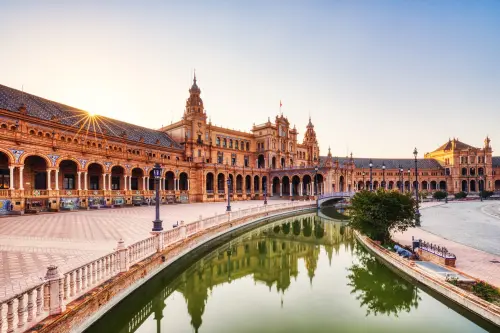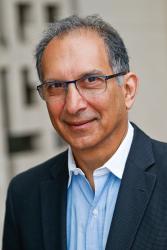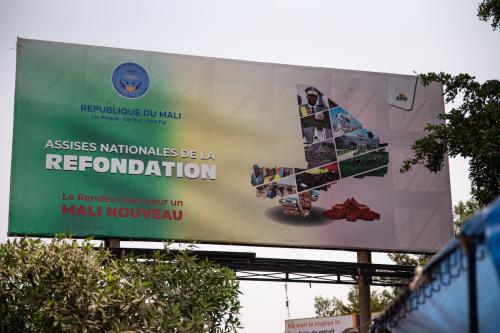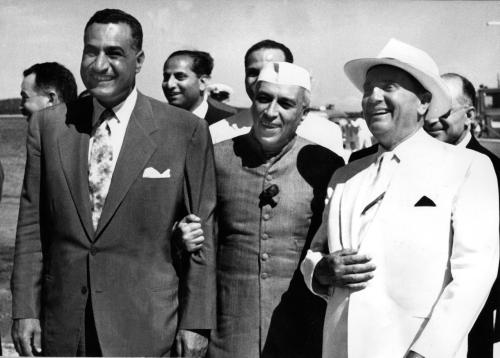Aid paradigms are rapidly changing. Development finance faces mounting pressures from the aftermath of the COVID-19 pandemic to heightened geopolitical uncertainty. Many donor countries are slashing aid volumes and increasingly aligning aid with national interests. The trend is upending traditional allocation rules and casting doubt on multilateral cooperation. Emerging markets and developing economies (EMDEs) must navigate this uncertain terrain while tighter capital markets and rising debt burdens severely constrain alternative financing options.
Against this backdrop, the Fourth International Conference on Financing for Development (FfD4) will take place in Sevilla, Spain, from June 30 to July 3, 2025, following previous gatherings in Monterrey (2002), Doha (2008), and Addis Ababa (2015). In a recent working paper, Homi Kharas and Mahmoud Mohieldin lay out four priorities for success at FfD4. In this written interview, Kharas assesses why sustainable development efforts have so far fallen short—and what must change.
He also highlights how FfD4 can reshape development finance narratives, help EMDEs expand fiscal space for long-term investment, and create a more cohesive, strategic approach to global financing.
The intellectual vacuum left by ‘old aid’
Junjie Ren (JR): In your recent paper with Mahmoud Mohieldin, you stated that “old aid” is out and warned of an intellectual vacuum left in its wake. Could you elaborate on what you mean by that?
Homi Kharas (HK): Under “old aid,” the international community set targets for aid volumes—such as 0.7% of gross national income from rich countries—and established guidelines for aid effectiveness (including putting developing countries in the driver’s seat).
The harsh reality is that there is no longer political support for such an agenda. In aggregate, aid never approached the 0.7% target; instead, we see aid being cut. Recipient countries have rarely been put in the driver’s seat; instead, aid is allocated and disbursed through channels according to national donor interest rather than development effectiveness. The absence of common norms and standards is creating a vacuum in which each donor country simply does what it wants.
If aid is to yield better results, it needs strategic sharpening whereby aid achieves more than just a collection of ad hoc projects that each does some good but where impact is so diluted that change is hard to discern and communicate.
Why FfD4 still matters
JR: FfD4 is about financing the Sustainable Development Goals. Isn’t the world different today than when the post-2015 agenda was established? So, is FfD4 still relevant?
HK: The Sustainable Development Goals were agreed to just after FfD3 in Addis Ababa. There had been an intense negotiation process, starting with engagement on a high-level panel report on the post-2015 agenda. That process framed sustainable development as an approach connecting the economic and social development of people, countries, and the planet in an integrated way.
This need for an integrated approach remains unchanged today. Indeed, advances in science warn there is even more urgency today than in 2015. The tactical elements may have changed: A greater focus on climate mitigation and adaptation is now warranted, alongside increased emphasis on preserving nature. There is concern over Africa being left behind and an urgent need to build resilience against natural disasters, which are striking different parts of the world with far greater frequency and damage. But the strategic imperative of a universal agenda covering multiple sectors, remains unchanged.
The relevance of FfD4 is to understand how investment needs have shifted in different places and how financing can best be allocated or incentivized to advance Agenda 2030.
So, both statements are true. Yes, the world is very different, and the development context has changed a lot. But, yes, FfD4 remains relevant as an opportunity to refresh the international financial architecture.
Breaking the cycle of cynicism at FfD4
JR: Processes like the Financing for Development conference are often dismissed as forums with no binding commitments. What fundamental shifts in the narrative do we need to see before and during the FfD4 in Sevilla to break this cycle of cynicism and move forward in development finance?
HK: I think we need an honest recognition that sustainable development is not working well enough and that simply arguing for more aid is unlikely to be effective. There are alternatives.
First, it is important to be clear about the scale of the investment and spending challenges that countries face. Traditionally, aid has been used as a key instrument for poverty reduction, humanitarian support, climate, nature, and other public goods.
Second, the private sector must be brought centrally into these programs by using aid to reduce the risks that the private sector faces in deploying capital in unfamiliar places.
Third, aid should leverage other sources of financing. Rather than solving problems on its own, aid can use innovative channels such as guarantees and guarantee funds, blended finance structures, debt swaps, and hybrid capital, for example. Aid can also catalyze other grant sources: special drawing rights, voluntary carbon credits, solidarity levies, and the like.
Fourth, long-term lenders should revisit their concept of fiscal space to support countries with quality investment programs, recognizing that it could take a decade or more before they are in a position to fully repay loans and being prepared to accommodate short-term liquidity shortfalls by reprofiling lending terms.
Why this moment is different—and urgent
JR: Historically, grand aspirations have cycled back without much tangible outcomes. In today’s political, economic, and institutional climate—especially in light of what many would describe as a seismic shift in global development—what makes this moment uniquely promising for a fruitful conversation at FfD4?
HK: This is a uniquely promising moment because the risks of failure are so high!
People across the world are demanding change. There is a pervasive sense that things are not working well, and that if things do not improve in emerging markets and developing countries, then the negative spillovers onto all countries will be severe.
On climate and nature, we’ve kicked the can down the road for over thirty years now, since the Rio Conference (1992). Science is telling us that this cannot go on for much longer without very serious consequences.
The challenge for FfD4 will be whether the desire for change can be channeled into a common purpose or whether ideas for change are so different across countries that each will take its own path.
Expanding fiscal space for a ‘big push’
JR: Many EMDE finance ministers champion fiscal prudence. You and your colleagues have called for a “big push” on climate and development investment. How do you propose expanding fiscal space in these contexts?
HK: The economic models that are used to quantify fiscal space are largely outmoded. They are not sufficiently long-term to recognize the benefits of new investments, and they do not pay sufficient attention to the returns on such investments. Expanded fiscal space results from an evidence-based discussion of the contribution of public investment and structural reforms to growth and creditworthiness, set within a framework of macroeconomic sustainability.
Beyond debt-to-GDP
JR: You argue that an overemphasis on debt-to-GDP ratios has led to chronic underinvestment in critical areas. What alternative measures/metrics could governments adopt to balance fiscal responsibilities with sustainable growth?
HK: Several countries have adopted independent fiscal councils to provide reasoned advice on appropriate borrowing levels. Others have set up special-purpose vehicles with professionally managed asset/liability accounting to safeguard creditworthiness. These have been extensively used for projects for which there is a financial revenue stream, such as toll roads and other infrastructure. Sound management of public investments—planning, allocation, and implementation—is key to ensuring maximum benefits.
Reshaping the ODA narrative
JR: You’ve noted that declining support for official development assistance (ODA) in rich countries is partly due to challenges in effectively communicating its impact. How can FfD4 help reshape the ODA narrative and make its benefits more explicit and tangibly aligned with national priorities?
HK: Traditionally, the ODA narrative has emphasized the moral case for aid—those who are richer and more fortunate can afford to help those who are less fortunate, at home and abroad. This remains a compelling narrative, especially in areas such as lives saved through vaccines and therapeutic treatments, or humanitarian relief.
Yet, ODA must serve broader objectives now, most importantly climate action, where it can tip the economics of choices between renewables and fossil fuels to the benefit of everyone and nature preservation. Taxpayers in donor countries care about these issues—FfD4 must reshape the ODA narrative in these terms, which reflects the reality of what ODA is achieving even now and combat the false narratives of waste, abuse, and fraud that are distorting the story.
Money is only part of the problem. Spending it effectively is another.
Homi Kharas
Integrating sectoral priorities strategically
JR: You also noted that FfD4 offers a unique opportunity to consolidate diverse sectoral priorities into a cohesive strategy. What are some concrete steps to integrate these priorities for sustainable development over the next decade?
HK: A problem today is that every sector has its own advocates. Developing countries want to prioritize adaptation to climate change. Advanced economies want to give money for mitigation. Nature preservation is always touted as important but has traditionally received very little. Health and education systems need strengthening.
This fragmented structure can lead to counterproductive outcomes. For example, costs for helping refugees from the Ukraine war have been met by cutting back on aid for sub-Saharan Africa. This makes no strategic sense.
What is needed is a better understanding of all the sectoral priorities and a sharp, strategic allocation of available resources between them, rather than ad hoc shifts from one sector to another.
Rethinking roles: How to begin reforming global development finance
JR: Beyond following traditional aid volumes, you’ve emphasized the need to reassess the roles of multilateral, bilateral, and national development finance institutions. Where should reform efforts begin? What critical areas must be addressed to expand and enhance the effectiveness of development finance?
HK: Money is only part of the problem. Spending it effectively is another.
Each provider of development assistance brings their own assets to the table. Multilateral institutions have technical expertise. Bilateral institutions can help mobilize the participation of their own domestic companies and financiers. National development banks provide local knowledge and local currency.
Reform should start with the articulation of a long-term investment platform—say, over five or ten years—which sets clear objectives. With this roadmap in place, each actor can understand its most valuable contribution, whether through financing, technical assistance, policy and institutional strengthening, project identification and execution, or risk reduction strategies for themselves and others.
A promising institutional innovation is the development of country platforms as a place where different organizations can coordinate in shaping systemic change. That’s a good place to start reforms. Then, multilateral, bilateral, and national financial institutions join country platforms and develop their own projects within the framework offered by the platform.
The Brookings Institution is committed to quality, independence, and impact.
We are supported by a diverse array of funders. In line with our values and policies, each Brookings publication represents the sole views of its author(s).







Commentary
Homi Kharas on FfD4: Can the Sevilla conference reshape global development paradigms?
March 17, 2025